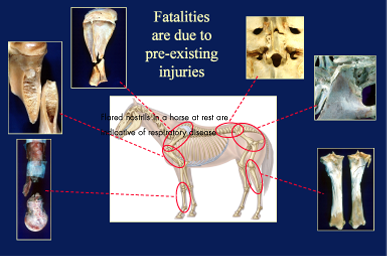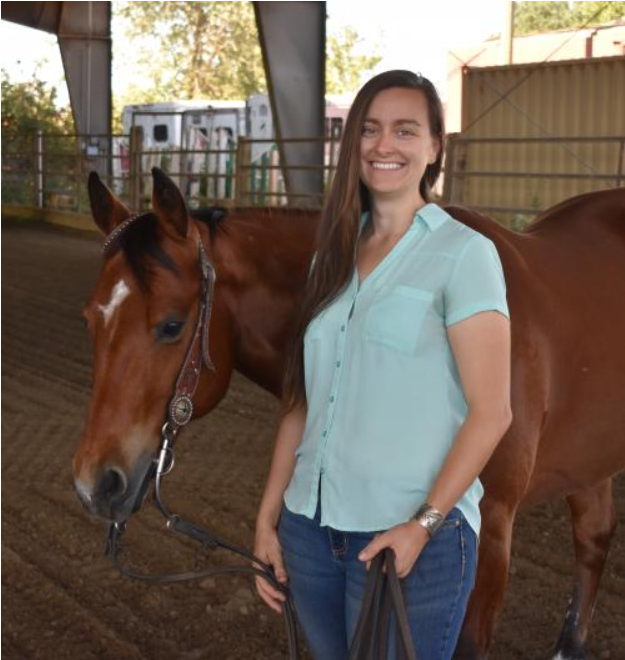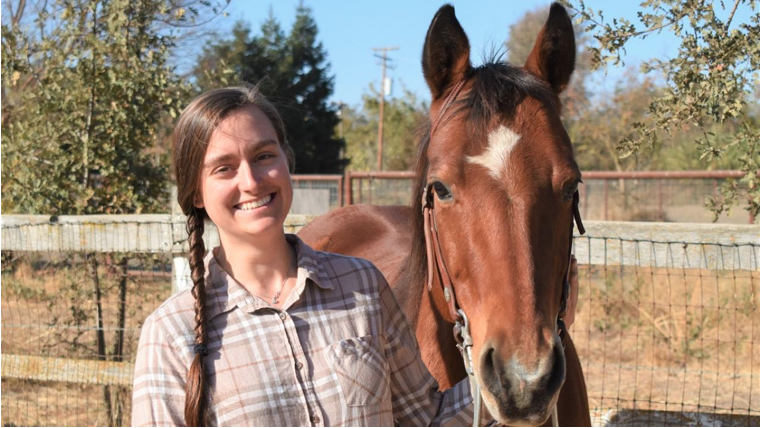
Catastrophic Injuries in Racehorses
We have...
- discovered that most fatalities due to a skeletal injury are predisposed by horses training or racing with a pre-existing injury (Figure 1)
- demonstrated risk factors for some injuries include …
- hoof conformation
- toe grabs
- training intensity
- lay-up enhanced
- diagnostic techniques for detection of mild injuries
Recently, we have discovered that pre-existing injuries also play a role in fractures of the proximal sesamoid bone that result in fetlock breakdown, the most common cause of death in Thoroughbred and Quarter Horse racehorses. With knowledge that catastrophic injuries are the acute manifestation of a more chronic process, we continue to work on understanding injury development to determine strategies for injury prevention.
Collaborations among the California Horse Racing Board Postmortem Program, California Animal Health and Food Safety Laboratory system, Thoroughbred and Quarter Horse racing industries, our research laboratory, and research funding organizations (Center for Equine Health, UCDavis; Grayson-Jockey Club Research Foundation; Pacific Coast Quarter Horse Association; Southern California Equine Foundation; USDA; and private donors) make this work possible.
Watch a short documentary clip summarizing the research involved in preventing racehorse injury.
Paulick Report- UC Davis Racehorse Injury Prevention Research
The majority of fatalities due to fracture of a long bone are due to transient weakening associated with attempted healing of a pre-existing stress fracture.

Sarah Shaffer Receives 2021 Wilson Award
Sarah Shaffer received the 2021 James M. Wilson Award, which recognizes a graduate student or resident who significantly advances equine health through publication of the year’s most outstanding research report. Shaffer, a Ph.D. candidate in mechanical engineering, was chosen for her publication entitled, “Subchondral focal osteopenia associated with proximal sesamoid bone fracture in Thoroughbred racehorses,” published in the Equine Veterinary Journal. Her research was conducted at the J.D. Wheat Veterinary Orthopedics Research Laboratory under the direction of Dr. Susan Stover.

Sarah Shaffer awarded 2019 Rowan Fellowship | School of Veterinary Medicine
The California Thoroughbred Foundation recently announced that the 2019 Louis R. Rowan Fellowship has been awarded to Sarah Shaffer. A Ph.D. candidate in mechanical engineering, Shaffer conducts her research in the UC Davis School of Veterinary Medicine at the J.D. Wheat Veterinary Orthopedics Research Laboratory under the direction of Dr. Susan Stover.
